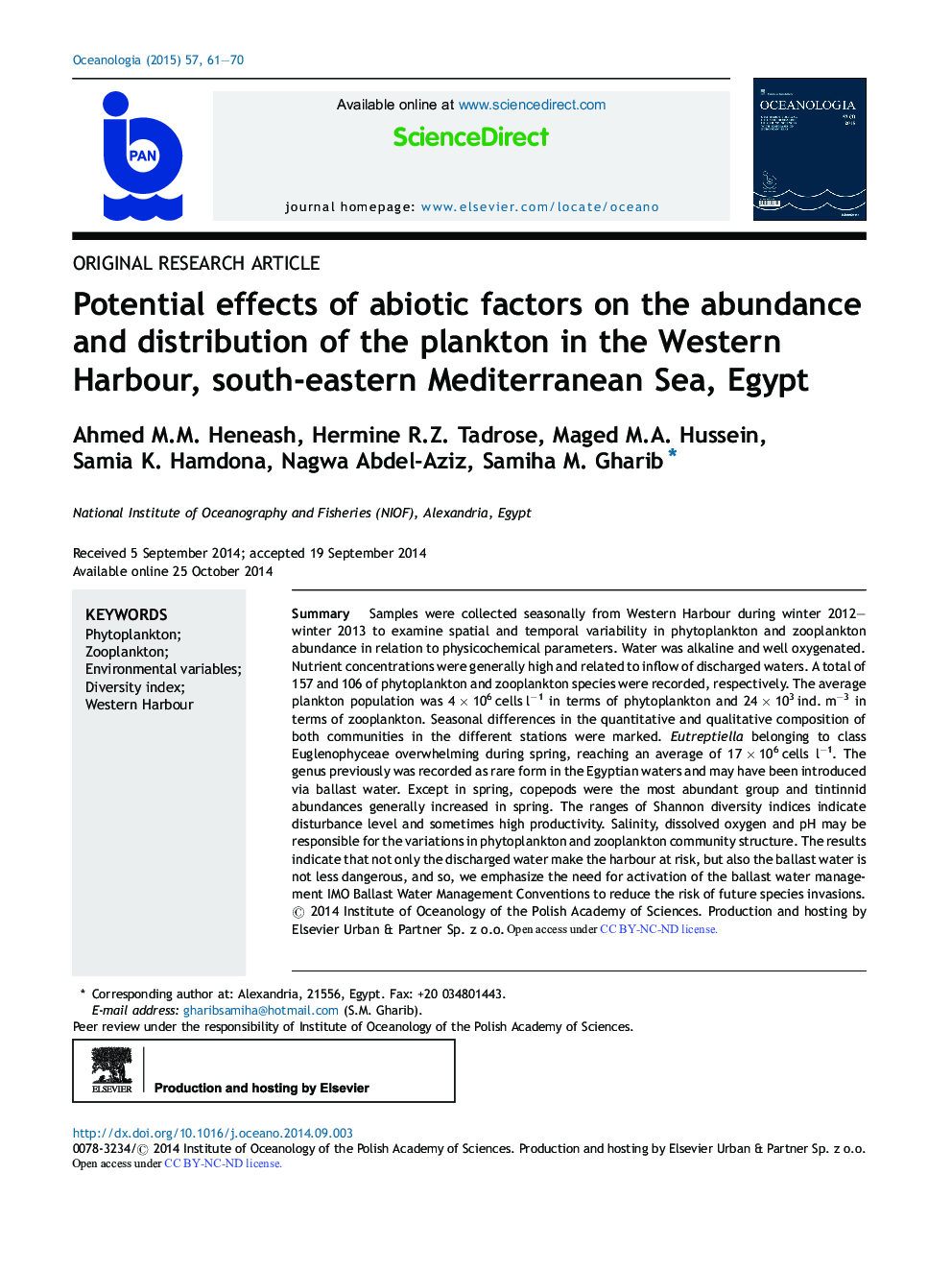| Article ID | Journal | Published Year | Pages | File Type |
|---|---|---|---|---|
| 2069833 | Oceanologia | 2015 | 10 Pages |
SummarySamples were collected seasonally from Western Harbour during winter 2012–winter 2013 to examine spatial and temporal variability in phytoplankton and zooplankton abundance in relation to physicochemical parameters. Water was alkaline and well oxygenated. Nutrient concentrations were generally high and related to inflow of discharged waters. A total of 157 and 106 of phytoplankton and zooplankton species were recorded, respectively. The average plankton population was 4 × 106 cells l−1 in terms of phytoplankton and 24 × 103 ind. m−3 in terms of zooplankton. Seasonal differences in the quantitative and qualitative composition of both communities in the different stations were marked. Eutreptiella belonging to class Euglenophyceae overwhelming during spring, reaching an average of 17 × 106 cells l−1. The genus previously was recorded as rare form in the Egyptian waters and may have been introduced via ballast water. Except in spring, copepods were the most abundant group and tintinnid abundances generally increased in spring. The ranges of Shannon diversity indices indicate disturbance level and sometimes high productivity. Salinity, dissolved oxygen and pH may be responsible for the variations in phytoplankton and zooplankton community structure. The results indicate that not only the discharged water make the harbour at risk, but also the ballast water is not less dangerous, and so, we emphasize the need for activation of the ballast water management IMO Ballast Water Management Conventions to reduce the risk of future species invasions.
